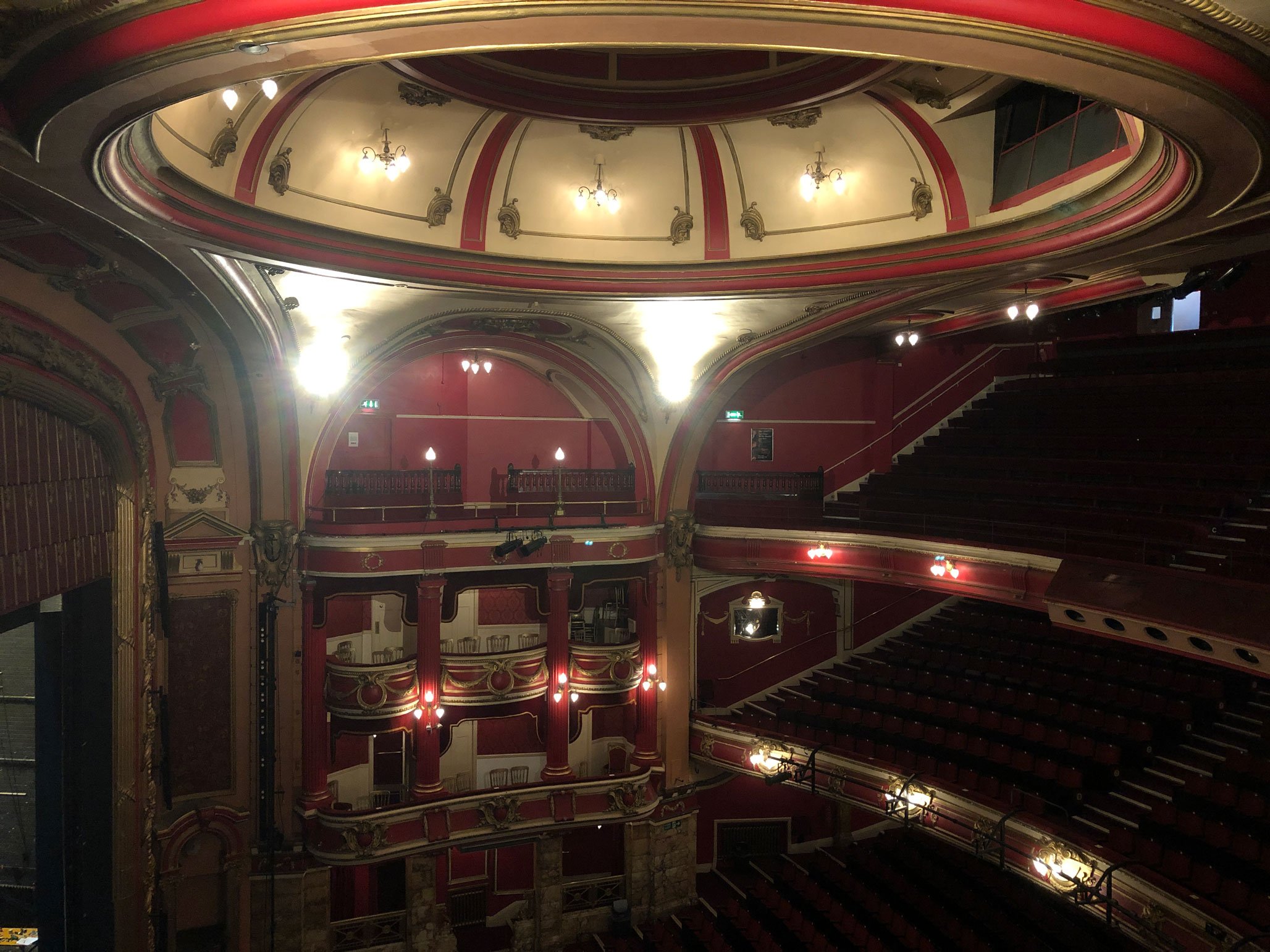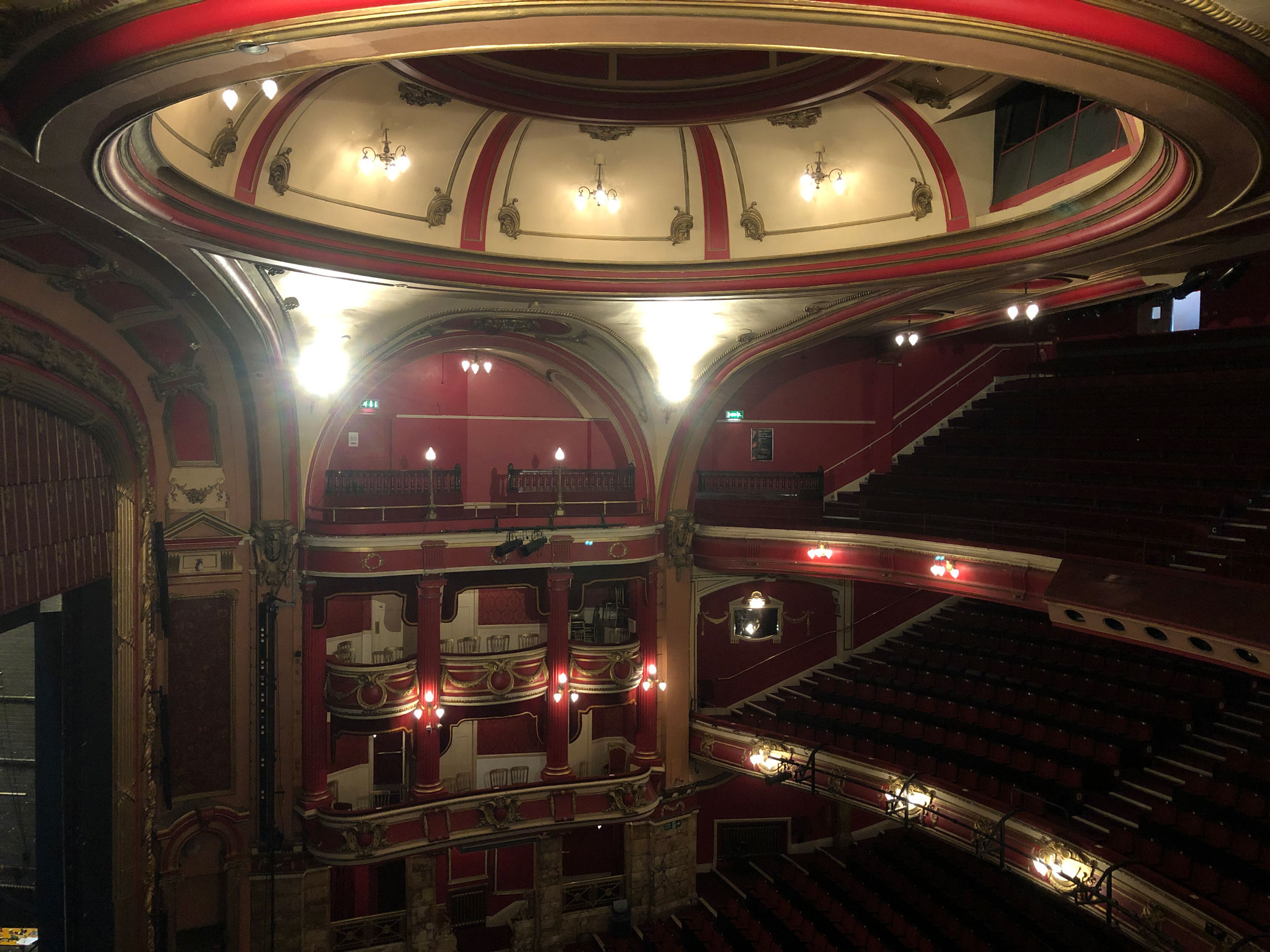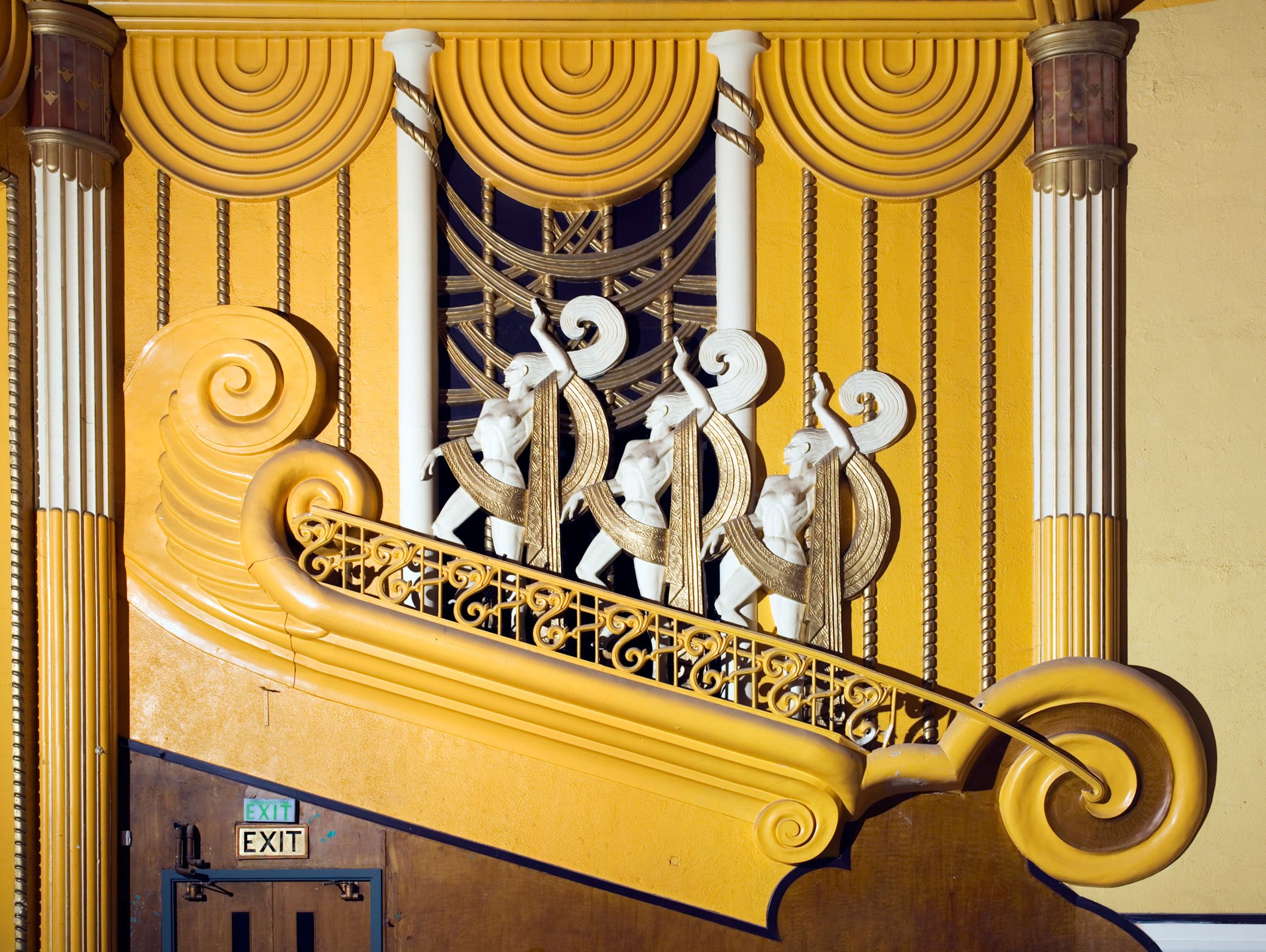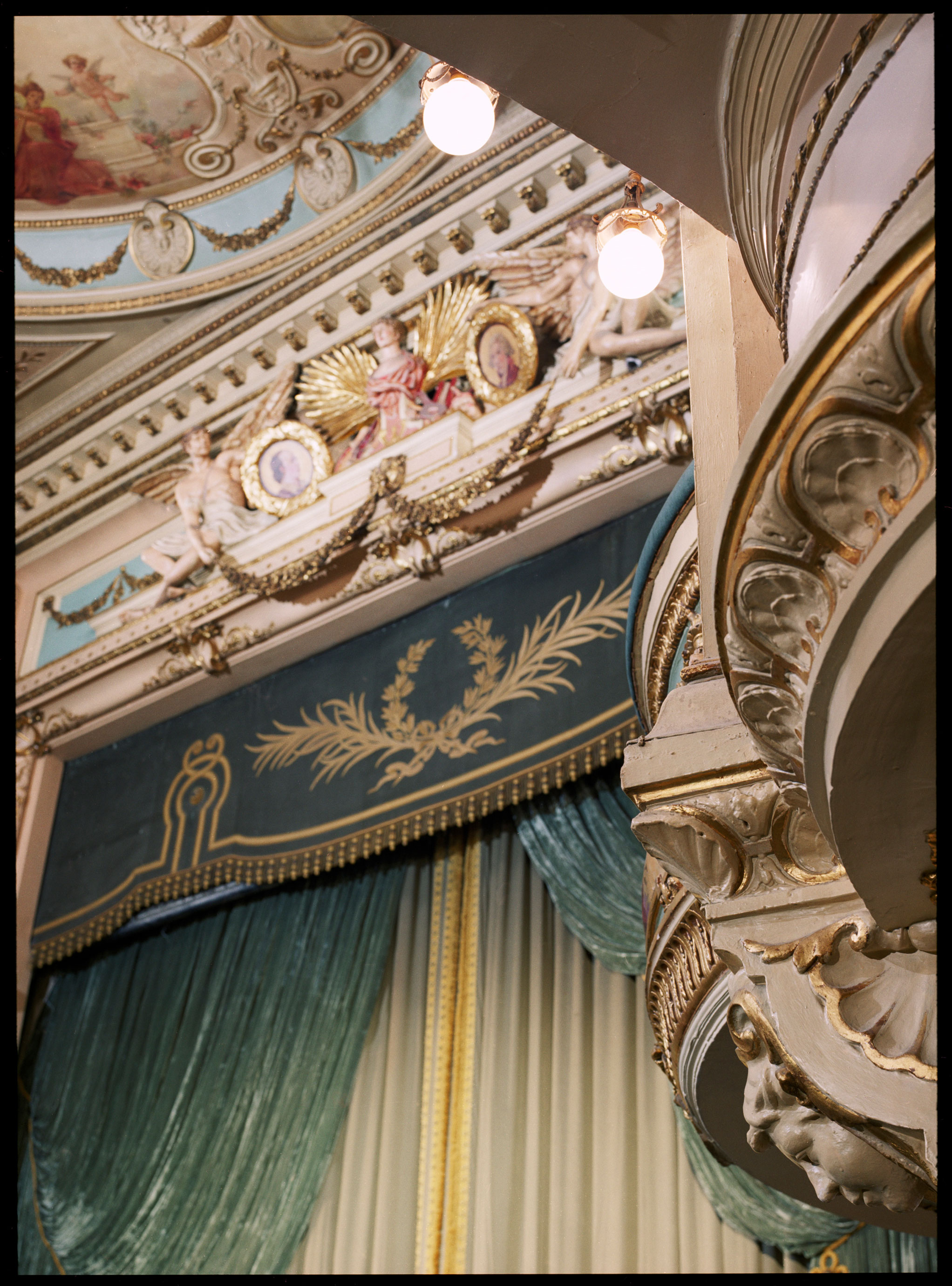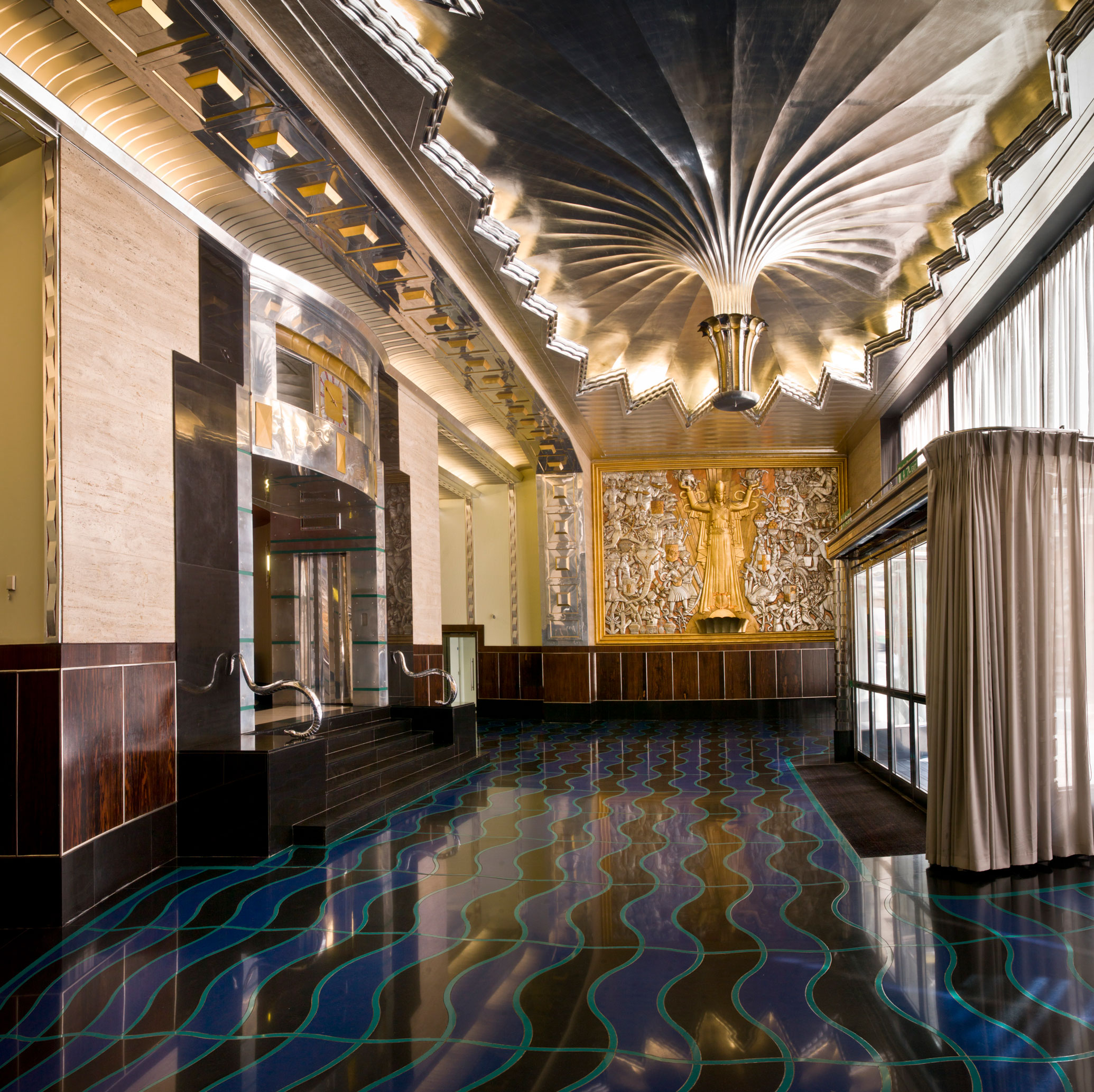An Overlooked Heritage: Fibrous Plaster in the United Kingdom
The University of Bath, Historic England and partners are researching the behaviour of fibrous plaster ceilings and decoration.
Overview and the importance of research
‘Fibrous plaster’ is a composite material patented in the UK in 1856 by Frenchman Alexander Desachy, with the rights subsequently purchased by George Jackson and Sons. The material matrix consists of gypsum plaster, also known as ‘Plaster of Paris'.
Fibrous reinforcement is traditionally provided by hessian fibres, produced from jute plants native to India. Within ceiling panel elements, supporting timber laths are also used at regular spacings. A fibrous plaster ceiling typically has two layers of hessian woven fibres, or ‘scrim’ -see Figure 1(a). Fibrous plaster ceilings are often suspended from timber or steel structural elements below roofs or fireproof floors using fibrous plaster ‘wads’, see Figure 1(b. In addition to gypsum and hessian, wads sometimes contain a steel wire for additional reinforcement. All modern wads include steel wires, but operatives in the fibrous plaster industry frequently observe degraded historic wads without a steel wire.
Fibrous plaster was used extensively in theatres, higher status private residences and civic buildings, particularly in the late Victorian and Edwardian eras.
Figure 1(c) and (d) show fibrous plaster ceilings from the underside and (e) and (f) show wads above the ceiling attached to roof structural members (images from different buildings). Figure 1 (g–i) shows holes in historic ceilings made to facilitate modern ventilation, light and sound systems.
Fibrous plaster degrades over time and the early 21st century witnessed failures of fibrous plaster elements in historic buildings. The highest profile example was the partial ceiling collapse in the Apollo Theatre, London, in December 2013, when 58 people were hospitalised.
It resulted in the Association of British Theatre Technicians 2015 guidance, stipulating that fibrous plasterers and structural engineers should regularly inspect the condition of ceilings. Further failures reinforced the need to ensure that ceilings continue to remain safe for human occupancy. There is extensive empirical knowledge of the material within the fibrous plaster industry; however, there is also a significant absence of data relating to material properties.
Research and application to conservation
Following the Apollo Theatre incident, Historic England initiated a research project in 2017 and commissioned the University of Bath to investigate the properties and behaviour of fibrous plaster. The results will be published in a book, “Fibrous Plaster: History and Conservation” (University of Liverpool Press, 2024). These investigations formed the basis for a Leverhulme Trust project in partnership with Historic England and industry stakeholders from the UK and Canada. This research will complement existing empirical knowledge with a scientific element based upon data, with quantification of material properties expanding the current state of the art.
Mechanical properties of fibrous plaster ceiling and wad elements are being investigated using the 1.5 metre square large-scale ceiling panel shown in Figure 2(a). To date, lateral loading has been applied to panels to simulate building envelope movement resulting from conditions such as subsidence, where wad failure is initiated at the location of attachment to the supporting steel beam, followed by failure at the wad base attachment to the topside of ceiling elements.
Figure 2(b) depicts an individual wad specimen (with internal steel wire) in a test rig for the application of tensile force. Hessian fibres provided an element of ductile failure, and the addition of a steel wire contributed further ductile yielding, providing a warning of impending failure.
Figure 2(c) shows flexural tests using rectangular flat samples between supports. New fibrous plaster material achieved flexural strengths of approximately 3.5 MPa (mega-pascal, a unit of pressure measurement equivalent to a Newton of force per millimetre squared area). Adhesion properties of modern repair options such as Jesmonite, glass fibres and the reinforcing Canadian product RE Aramid Gel™ with Kevlar® fibres are also being examined.
Adhesion tests [see Figure 2(d)] involved the ‘pull-off’ of 6 millimetre-thick cylinders comprising a repair material applied to a plaster base representing a wad to panel interface in historic material. Tops of cylinders were affixed to an aluminium block with glue, with the block (with cylinder attached) pulled off both clean and dirty bases with applied tensile force.
Fourier-transform infrared spectroscopy tests were employed in conjunction with mechanical tests to relate chemical and physical changes and determine which treatments were the most deleterious. Figure 2(e) shows a Fourier-transform infrared spectroscopy scan on hessian fibres. Two wavelength peak values on the resulting spectra of various hessian fibres were chosen; one was divided by the other to produce a peak ratio.
Two peak ratios were plotted together on x and y axes as shown in Figure 3, identifying zones which correspond to the moisture or fungal-related conditions endured by fibrous plaster. Distinct clusters are in evidence, with extended fungal exposure on the left working towards moisture-related treatments to the right. Distinct at the top is new, untreated hessian fibre. From flexural test results, it was determined that the most deleterious treatments were exposure to fungal spores for two years, cyclic wetting and drying and full submersion in water, highlighting the potential danger of water leaks to in-situ fibrous plaster.
DNA analysis of historic fibrous plaster is being employed further to identify the fungal species present.
The environment above and below fibrous plaster ceilings in historic theatres is being monitored, with sensors measuring temperature and relative humidity levels as a function of human occupancy and external climate. Figure 2(f) shows a sensor installed just above a theatre ceiling. Data covering the recent winter period, when heavily attended theatre performances occurred on cold nights, is currently being analysed. Analysis will evaluate how performances and weather influence the environmental conditions to which ceilings are exposed.
Optical and electron-based microscopy has enabled examination of the microstructure and chemical composition of fibrous plaster and paint layers providing more information on internal decorative practices and environments. Figure 2(g) is a Scanning Electron Microscope image of suspected fungal growth within historic fibrous plaster. Figure 2(h) is an optical microscope image of paint layers applied to plaster and Figure 2(i) shows an ion-milled cross section of a single hessian fibre.
Results can provide fibrous plaster conservation and commercial repair companies with quantification of material properties including:
- Tensile strength of wads along the wad length (individual wads tests)
- Adhesion strength of wads attached to the topside of a ceiling (‘pull-off’ tests)
- Flexural and compressive strength of ceilings (rectangular plate and large-scale tests respectively)
- Lateral displacement tolerance of wads (large-scale tests)
- Properties of modern alternative repair materials such as Jesmonite, Re Aramid Gel™ and glass fibres
- The Fourier-transform infrared spectroscopy using the Attenuated Total Reflection peak ratio method can help identify environment-induced changes in fibre properties.
Fibrous plaster details
Please click on the gallery images to enlarge.
Conclusion
This ongoing fibrous plaster research combining the knowledge and experiences of the University of Bath, Historic England and Industrial partners will provide a scientific basis of data and quantification to complement conservation and commercial repair work. Data has already been acquired by mechanical testing, investigation of moisture and fungal-related degradation, microscopy, spectroscopy and in-situ environmental monitoring.
The preservation of beautiful fibrous plaster ceilings and other ornamental elements involves keeping them in both aesthetically pleasing condition and, of paramount importance, safe for people to enjoy for decades, and indeed centuries, to come.
Acknowledgements
The authors gratefully acknowledge the funding and support of the Leverhulme Trust (grant number RPG-2021-147) and Historic England. Special thanks to our partners and collaborators, Hayles & Howe (Bristol, UK), Locker and Riley (Chelmsford, UK), Ornate Plaster (Farnham, UK), and Historical Plaster Conservation Services (Canada) for providing materials, test specimens and historic fibrous plaster samples. Thanks are extended to the Bristol Hippodrome and Old Vic Theatre (Bristol, UK) for supporting our on-site studies, and Richard Ireland and Scott Brookes for stimulating discussions.





Further information
Shamsiah Awang Ngah, Barrie Dams, Martin Ansell, John Stewart, Russel Hempstead, Richard J. Ball, 'Structural performance Fibrous Plaster: Physical and Mechanical Properties of Hessian and Glass Fibre Reinforced Gypsum Composites' Construction and Building Materials, (2020) 259 [30] 120396. doi.org/10.1016/j.conbuildmat.2020.120396
Zoe C. Maundrill, Barrie Dams, Martin Ansell, Daniel Henk, Emeka K. Ezugwu, Marion Harney, John Stewart, Richard J. Ball, ‘Moisture and Fungal Degradation in Fibrous Plaster,’ Construction and Building Materials, (2023) 369, 130604. doi.org/10.1016/j.conbuildmat.2023.130604
Historic Fibrous Plaster in the UK: Guidance on its Care and Management
John Stewart, Gary Buckley, Richard Fenton, David Harrison, Adam Magrill, Jonathan Riley and Brian Ridout. 2019.

